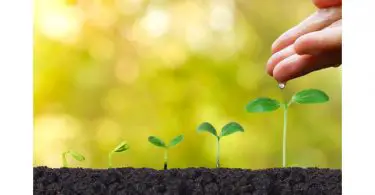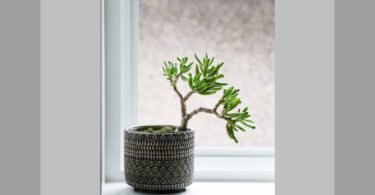Radko Tichavsky is a Czech born Mexican Agrohomeopath. He is a co-founder and director of Instituto Comenius in Mexico and author of Handbook of Agrohomeopathy, 2007 (Spanish) and Homeopathy for Plants, 2009 (Spanish) and creator and teacher of Holohomeopathy.
Agrohomeopathy Course!
Radko Tichavskyi is now offering a one semester virtual course in Agrohomeopathy (in English). You can learn how to define and analyze holons and how to repertorize the specific homeopathic treatment beyond just disease or pest names. You can find out more here: www.icomenius.edu.mx
A Materia Medica and Repertory for Plants: Mark Moodie hosts the website “Considera”, which provides a growing M.M and Repertory for plants and discusses resources for biodynamics and Agrohomeopathy .The website allows the world community to contribute their experiences in planting.
Dear Dr Tichavsky,
I know about homeopathy and use homeopathic remedies when I need, but I am absolutely new in Agrohomeopathy. I wonder if you can help me with my problem. I have absolutely no fruits from my apricot and guava trees. I live in Los Angeles, California. The weather is usually very hot and dry. I planted my trees 3 years ago, they look healthy, bloom in spring, but I do not get any fruits out of it. Do you have any suggestions regarding this problem?
Thank you
Galina
Radko Tichavsky:
Dear Galina,
For the correct fruiting of guava and apricot before the flower formation, apply Staphysagria 200 CH and Phosphorus 12 CH. The guava and apricot are self-pollinating trees, but the visit of Apis mellifica, the common bee that carries out the cross-pollination, always gives better results. To attract them, you can plant some species of plants that attract the bees near your frutal trees, for example: marjoram, borage or lavender.
You can also apply honey and propolis at 12 CH potency to atract them more intensely and stimulate the formation of flowers. Remember that after the flower opens you will have about 30 hours to pollinate, which can also be helped manually with a brush. Once the first flower is opened, apply Sepia succus 200 CH in a single sprayed application on the canopy of the trees. The guava and apricot require full access to sunlight to be able to fructify correctly. Both in the guava and in the apricot it is necessary to diminish the irrigation during the flowering, otherwise the flowers will be aborted with ease.
Before the formation of fruits apply Cuprum metalicum 6 CH and Zincum metalicum 6 CH (foliar applications by spray). Once the fruits are formed the trees will require a good irrigation and an application of Kalium carbonicum 6 CH and Kalium suphuricum 6 CH to ensure good growth and size of the fruits.
Sometimes it happens that the lack (phosphorus) or excess of nutrients (for example of nitrogen) can be a cause of lack of fruit formation. The best solution is the foliar and soil application of tea-compost made of quality compost and avoiding synthetic fertilizers or fertilizers of animal origin.
Dear Radko,
My oleander bushes appear to be infected with oleander leaf scorch disease. I live in northern Tuscany, Italy at an altitude of 530 metres, with hot dry summers and cold winters (corresponding to zone 7a in USA). The oleanders are long established. Two are still reasonably healthy, two are dying from the leaf scorch.
Is there anything holistic I can try to eliminate this infection, or is removal the only solution?
Best wishes,
Peter Dunseith
Radko Tichavsky:
Dear Peter leaf scorch disease can sometimes be confused or combined with Boron toxicity or saline toxicity in the soil as precondition which causes a disturbance in the vital dynamis of the Oleander plans, and attracts the presence of the bacterium Xylella fastidiosa. This gram negative bacteria enters in the xylem, where it can then multiply and spread throughout the plant to such an extent that they greatly reduce the movement of water within the plant.
The vectors of this disease are insects that feed on the xylem of the plant, and in case of re-infection the plant succumbs little by little in a kind of regressive death. It is necessary to carry out two defensive first actions that assure the diminishing of the insect vectors of the disease. Apply Calcarea carbonica 6 CH foliarly at least four times (once a month) with a little Opuntia ficus indica sap as a coadjuvant, especially when there are new shoots of tender leaves on the plant, to harden the epidermis of the leaves and make it difficult for the sucking insects to penetrate it.
Then make a single application of Borax 30 CH and a week apart an application of Natrum muriaticum 30 CH. Both applications should be foliar, and add a little Opuntia ficus indica sap gel as an adjuvant.
The following week will begin alternate applications of Allium sativum 6 CH and Thymus vulgaris 6 CH alternating in a week’s time always sprayed foliarly. Apply a little apple vinegar in all the irrigations.
Hello Radko,
My name is Vito and I participated in the course of agro-homeopathy that was held in November in Palermo. I have olive trees with the so-called Rogna dell’ulivo caused by a Gram negative bacterium called “Pseudomonas Savastanoi. It presents with roundish tumor growths with a fixed surface of brownish-yellowish color and can reach dimensions of a few cm, especially in young branches, and is also present in the present in the leaves, fruits and roots leaves, fruits and even roots. Research has shown that Pseudomonas is almost always associated with two other bacterial species (Pantoea Agglomerans and Erwinia Toletana) that are normally found on the external surface of the plant (epiphytes) or within their structures (endophytes) but that in this disease manage to communicate with each other through chemical signals, promoting the development of the disease and its propagation with an enhanced multi-bacterial combination. I live in Sicily and precisely in the province of Agrigento, and the rainfall in this area is very scarce, and the temperature even in winter never goes below zero. How can I intervene to save these plants?
Thanks and I hope to see you again soon
Vito
Radko Tichavsky:
Dear Vito,
The intervention must combine several actions to be successful: first always start pruning healthy trees and branches that do not have this condition, and be sure to apply Hypericum perforatum 6 CH and Arnica 6 CH for the proper healing of the olive trees. Also disinfect the cutting tools between one tree and another. Maintain always a good mulching of the soil to maintain a wide biodiversity of microorganisms antagonistic to the Pseudomonas savastanoi, Pantoea agglomerans, Erwinia toletana and mycoplasmas associated with this pathological microorganisms cluster.
The homeopathic remedies that are used for the control of olive rust are Eucalyptus globosus 6 CH, which has a good metabolic similarity to the olive tree with 18 common metabolites and contains two powerful compounds 1,8, -cineole and eucalyptone, both active against gram negative bacteria. Thymus vulgaris 6 CH made from thyme essential oil contains the main compound in the fight against the bacteria and mycoplasms that make up the complex of microorganisms related to the olive rust: the thymol. Thyme has even greater metabolic similarity: 29 common metabolites with the olive tree. The third remedy is Allium sativum 6 CH (contains ajoene and allicin two compounds with strong anti gram negative, fungicide and anti mycoplasma activity) and in this case has 37 metabolites common with the olive tree. Also apply Sesamum indicum 6 CH prepared from the seeds (contains verbascoside) and has 35 common metabolites with the olive, as well as Echinacea purpurrea 6 CH with 13 common metabolites and containing the same antibacterial compound.
Dear Mr. Tichavsky
We’ve had a problem with aphids destroying our pepper crops. We never use chemicals to solve that problem, but these aphids are very hungry! Is there a safe way to stop them from consuming our crop? We live on the East Coast of the U.S. in Newark, Delaware (Zipcode 19702). Weather goes from freezing in the winter to 90F in the summer. Moderate rainfall.
Thank you
Jennifer Harding
Radko Tichavsky:
Dear Jennifer,
To diminish the attacks of the aphids you have to make sure that the epidermis of the plants are hardened, since the stylet mouthpiece is really flexible and the insect looks for either young leaves, leaves with soft epidermis, as for example of the plants that present excesses of nitrogen and produce large soft tissues and are full of juice. The first remedy is calcarea carbonica 6 CH applied in spring with olive oil as coadjuvant (approx a quarter of a liter for each 200 l of homeopathy) and in the summer with Aloe vera gel as coadjuvant in the same proportion. The adjuvant ensures adhesion of the homeopathy in the leaf and its greater permanence in the plant. It is important to avoid fertilization based on animal excrements (they attract aphids through traces of semiochemicals), so use only compost of plant origin to fertilize your crops.
Maintaining a mulching in the form of decomposed native plants on the surface of the soil helps to create habitat favorable to the permanence of spiders, erawigs (Forficula auricularia) and coccinelids (for example Hyppodamia sp) and other natural predators of the aphids. You can also observe that the aphids are associated with other insects, typically ants, which protect the aphids from natural enemies and receive in exchange a kind of sweet exudate. So the decrease of the ants in the pepper plants will be a good sign of future decrease of the aphids. The second remedy to apply is bionosode (homeopathic remedy) made from the same aphids at the 6 CH potency. It must be prepared exclusively from live aphids of great vigor by preparing mother tincture (50% of volume of attacked tissue and aphids and 50% of ethyl alcohol). The application of bionosode serves to warn the natural enemies of aphids by means of the semiochemicals (for example the parasitoid wasps) about its presence in the orchard and attract them towards them.
The third step is the application of Daucus carota (made from carrot seeds) applied in the 6 CH potency sprayed with Aloe veraas a coadjuvant over plants and fruits. Daucus carota has great metabolic similarity with 98 common metabolites. It attracts a large amount of parasitoids of the aphids that parasitize the Capsicum sp. and also exerts a direct action of insecticide.






Dear Radko,
Thank you for your advice and work. Have you ever considered the totality of the gardener/care-taker when looking at the health of his/her plants?
Thank you
Maria